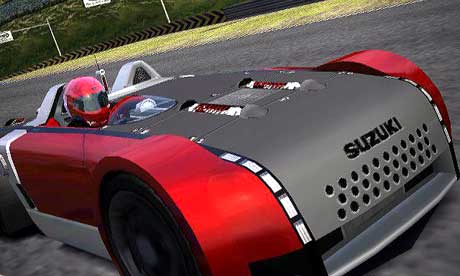
Sometimes, when casually assessing the latest pieces of next-generation eye candy, it's easy to overlook the astonishing amount of work that goes into games these days. Take Race Driver: Grid from UK developer Codemasters, which I played last week at the company's offices. Due out at the end of this month, it's a sprawling, visually stunning epic, allowing gamers to drive everything from F1-style "open wheel" racers to stock cars and souped-up American muscle beasts.
Each car takes around three months to design and build, starting as an orthographic blueprint based on manufacturer data, and ending as a fully textured 3D model. They're constructed like real cars; the artists work up visual representations of the engines, the exhaust systems, the axles and other key mechanical elements and then place chassis panels over the top. The game's damage system is so realistic that, in a crash, the car will deform with total authenticity, losing wheels, bumpers and other huge chunks of metal, amid a flurry of complex physics calculations. The damage differs depending on what the vehicle parts involved are made of - metal, carbon fibre, fibreglass; they all split, crumple and explode differently. It's a weird thought, all this mathematical and artistic genius being plyed into a simulation of something horribly destructive.
But then, destruction is an intrinsic element of game design. We can't escape from it. No matter how much we'd like to transcend it, no matter how successful Nintendo is with its comfy cutesy family titles, a huge number of gamers just want to smash things, or shoot them, or smash them and then shoot them. Race Driver: Grid, and other racers like it, are built for us to revel in our darkest fascinations with automotive carnage. It's sort of the unspoken truth about racing game design. What we all want to know is, what happens when we lose control? Race Driver: Grid even lets you rewind your accidents, frame by frame, then once again attempt the tricky double-apex corner or crowded chicane that led to your car's demise. It's completely engrossing.
Damage is now such a fundamental element of the driving game genre that to not spend many seconds of screen time dwelling over each and every prang is unnatural - the most common criticism aimed at the Gran Turismo series is its curious lack of damage modelling. In most racing games, the sheer effort and time and resources that go into building car models is belittled in the end by the mathematics of annihilation. We love complexity, because it makes destruction more fun. It's best not to think about it - just put your foot on the accelerator and hope for the worst.

